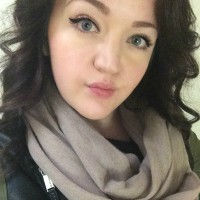Water is calorie free, nutrient free, and generally additive free, so why would anyone examine the label on a bottle of water?
You may assume that I am about to tell you about all the scary contaminants that could be in your water or alert you to the alarming fact that the plastic in the bottle may be leeching toxins. I’m not, those topics have been very well covered by many other people.
What I am concerned with is found in the tiny print at the bottom of the nutrition label—this is where you will find where your water is sourced. You may have never noticed or cared before but pay attention, because you may be unwittingly contributing to the California drought, even if you don’t live anywhere near California.
Disturbingly, most companies that sell bottled water try to keep the details about their sources murky, marketing with the phrase “natural spring water.” In reality, this phrase means very little. In essence there are only two ways water is sourced for bottling—“spring water” makes up about 55% of bottled water and the other 45% is “municipal water.”
So what do those terms actually mean? According the the EPA here are the definitions:
Spring Water: Water taken at the point where water flows naturally to the earth’s surface or from a borehole that taps into the underground source.
Municipal Water: Essentially this is tap water, purified and bottled by the distributor.
What about all those other adjectives on the bottle though? Doesn’t my water come from glaciers and mountain streams? Actually, the EPA has something to say about those terms as well:
Glacier or Mountain Water: These are not accepted identifiers by the EPA; they do not guarantee that the water is from a pristine area.
So according to the EPA, the image of water flowing from a pristine mountain stream straight into a bottle is a meaningless descriptor, an advertising gimmick for what is essentially tap water. One of the largest Nestle bottling plants is a municipal source in the state capital Sacramento, yummy bottled city water. What else are they barely telling you on that label?
Major companies have been bottling water in California for more than 100 years now. Four of the major brands primarily source their water from the drought ridden state—Auquafina/Pepsi Co., Dasani/Coca-Cola, Arrowhead/Nestle, and Crystal Geyser. Nestle alone buys millions of gallons of municipal water from Sacramento each year, and has been exporting water from the San Jacinto mountains with a permit that expired in 1988.
These companies will tell you that their impact on the state’s drought situation is minimal, siting studies that point to agriculture as the primary water abusing industry. Does that excuse their drain on California’s resources? At a time when residents are following mandatory state cutbacks big corporations continue to bottle resources at the same rate.
The reality is that it all comes down to one thing, money. Big water is making a profit on the sunny West Coast, to the tune of $12 billion dollars in 2012. By selling a public, and limited, resource they are making a profit. In fact, in a recent interview, Nestle CEO Tim Brown stated, “If I stop bottling water tomorrow, people would buy a different brand of bottled water. We see this everyday. In fact, if I could increase [bottling], I would.”
Statements like this make me angry. It is not a responsible statement made by a rational person; this is a statement made by a person that is blinded by profit. As other companies have proven, it is possible to move bottling plants into states that can actually sustain the process. Ethos, the Starbucks brand of water, moved bottling out of California this May in response to the drought. While this was likely to avoid a scandal, they actually made the move, and for that I commend them.
Now if the other suppliers could follow suit and move out of California too, there might be a chance of repairing a very damaged and drought stricken region of the country (LINK 13).
So what am I asking of you? I am simply asking, as a Californian, as one person hoping to alleviate some of the stress on this planet. Avoid bottled water when you can and when you can’t, read the label first. Consider giving your money to a company that doesn’t carelessly exploit limited resources. If nothing else, those of us in California would thank you for joining our fight.
~
Relephant:
Bottled Water vs. Tap Water: Rethinking how we Drink.
~
Author: Kelly Visel
Editor: Travis May
Photo: Wikipedia







Read 0 comments and reply